Isambard Kingdom Brunel was arguably Britain’s greatest engineer, certainly her most ambitious. Operating at the height of the birth of the Victorian age, Brunel’s remarkable career saw him transform tunnelling, bridges, railway lines and ships – impressive not just in the technological advances made but also in the look and size of his works. In this special episode, we go through some of his key projects and find out more about the life of the one of the most iconic figures of the Victorian age with his trademark stovepipe hat and cigar. You can listen to a free preview of our special episode below, purchase the episode for just $2 or read on to find out more.
Overview
Brunel was born on the 8th of April 1806 in Portsmouth, the son of a renowned French engineer, Marc Isambard Brunel, and an English mother, Sophia Kingdom. As such, unusually Brunel took his mother’s maiden name as his surname. He was only 5ft 3in tall but his nickname Little Giant indicates that while his physical stature was small, his influence and his ambition was vast. He was determined to be “the first engineer and example for all future ones”, with his motto of “En Avant!” (“Get Going!”) indicating his determination to achieve as much as possible. As such, he was an incredibly hard-working individual, working excessively long hours with hardly any sleep. He was also something of a perfectionist – Brunel had to do things that were the best and the biggest that they could possibly be, regardless of his experience in that field and regardless of cost!
He benefited from the best possible upbringing for an aspiring engineer. His father, Marc, was himself highly respected, having fled the French Revolution to become chief engineer to New York before receiving a letter of introduction from Alexander Hamilton that led him to work for the Royal Navy and the army in Britain. Marc taught Isambard to draw at 4 (apparently he could do a perfect circle), Euclid at 8 (geometry) and the Engineer’s Alphabet, by which he could (simply by looking at them) identify how a building was built and locate any potential defects in its structure.
The Battle of Waterloo in 1815 saw peace finally break out in Europe after nearly thirty years of war. For Marc Brunel, this saw him sent to a debtors prison for a time when the army refused to pay him for the thousands of now defunct army boots he had manufactured (at their request!) For Isambard, however, peace provided him with the opportunity to continue his studies in some of the great educational establishments of France. In 1820 (aged 14), he was sent to improve his mathematics at the College of Caen before progressing to the illustrious Lycee Henri-Quatre in Paris. He also served an apprenticeship with the legendary horologist (clockmaker) Louis Breguet, who wrote to his father praising Brunel’s “happy, inventive disposition”. In 1822, Isambard returned to England to finish his apprentice as an engineer by working with his father on his first great project.
Thames Tunnel
Remarkably, in 1820 there did not exist a single tunnel running under a river in the entire world. In London, this left the Thames a terribly congested area, with c. 4K carts per day crossing London Bridge and 350 ferries sailing up and down the river. The solution devised by Marc Brunel was inspired by a worm (teredo navalis), which chewed through ship’s timber, its head protected by a hard shell and its excretions providing the lining that supported the tunnel behind its body. Marc Brunel patented a tunnelling shield: a cast iron giant structure with 36 cells in which workmen would excavate the face of the tunnel while behind them the tunnel was layered with bricks. When their digging had progressed enough, the tunnel would be jacked forwards.
Brunel joined his father’s team building the world’s first tunnel running under a river, going from Wapping to Rotherhithe. It was unpleasant work due to the poor sanitary conditions of the Thames (essentially, in the days before sewerage systems, something of a cesspit), meaning that many of the workers fell ill with diseases like cholera. Indeed, in 1826 Marc himself fell seriously ill with pleurisy and had to be replaced as the leading engineer on the project. Despite being only 20 years old, Brunel replaced his father and led by example, working long hours and practically living underground.
The other danger was flooding (they were only 15ft below the riverbed), and in 1827 the project suffered its first serious flood when a hole in the riverbed opened up. Brunel borrowed a diving bell and was lowered to the riverbed himself to inspect the damage, taking great delight in the novelty and danger of the process. It took 3 weeks to seal the leek and another 6 months to pump out water but Brunel also needed to fix the damage done to the confidence of investors in the project. So, he organised a banquet held in the tunnel with his notable guests in full dining gear being entertained by the Coldstream Guard!
Unfortunately, there would be another, much more serious flood in 1828, with the entire tunnel underwater in just 15 minutes. Six workers were drowned attempting to reach the main exit (two of whom had been working alongside Brunel) and Brunel was incredibly lucky to survive. Fascinated by the onrush of water, he was knocked out and swept to a locked emergency exit that a fellow engineer just happened to open before Brunel was swept away to his death. Nevertheless, he suffered a serious leg wound and internal injuries that required a prolonged convalescence while the tunnel itself was bricked up for 7 years as the investment dried up.
Marc continued to push for further funding, though, and with help from the Duke of Wellington a loan was raised and the tunnel finally opened in 1843, with Victoria and Albert walking the whole length of the tunnel. Unfortunately, financial pressures meant that the proposed spiral road ramps to allow carriages to get into the tunnel were never built, meaning it only opened as a pedestrian tunnel and did little to improve traffic in the city. It was eventually incorporated into the London Underground and Overground lines and is still in use today for this purpose.
Clifton Suspension Bridge
While recuperating from his injuries, Brunel went to Bristol and learned of a competition to design a bridge to go over the Avon Gorge (250ft deep with sheer cliffs on either side). Despite never having designed a bridge before, Brunel entered the competition which was judged by the veteran engineer Thomas Telford. Telford rejected Brunel’s design, believing the spans (i.e. the length of bridge between supporting towers) was too long, as well as all the other designs and submitted his own, which was rejected for being too costly. A second competition saw Brunel placed second but he arranged a meeting with the chief judge and convinced him to award the design to him instead!
So, in 1831 work began on building Brunel’s bridge in what would be his first major project as the designer (he affectionately dubbed the bridge “my baby…my darling”). Despite Telford’s concerns, Brunel went with a 702ft long span in order to utilise the dramatic impact of the environment and planned giant Egyptian sphinxes (something of a fashion at the time) at either end. His predilection for danger came to the fore again after the towers had been built and a wire was set up between them to transfer supplies with one man going in a small basket that would be pulled precariously over the gorge. After an initial mishap saw the bar falling, Brunel insisted on being the first to use it and when half-way across the rope snagged and he was stuck. Incredibly, he climbed out of the basket (totally unsupported), freed the rope and then carried on!
Sadly, the building of the bridge was interrupted by political unrest. The House of Lords rejected what would later become the Great Reform Act, leading to 500-600 people rioting in Bristol for several days. Brunel was actually enlisted as a special constable but the impact was that the bridge was delayed, funding dried up and ultimately it was abandoned. The bridge was actually only finished after he died as a posthumous tribute arranged by the Institute of Civil Engineers but it still stands today, a magnificent structure that arguably achieves the rare feet of enhancing its environment.
Great Western Railway
The most exciting technological innovation in this period was the birth of steam railway. The first successful engine was Blenkinsop’s Salamanca in 1812 but it really took off with Robert Stephenson’s Rocket in 1829 as a commercially viable mode of transport. Brunel took a trip on the Manchester railway in 1831 and was unimpressed by how bumpy and noisy the experience was (apparently he was unable to draw a perfect circle) and wrote a note to himself, clearly determined to do a better job of it:
“I record this specimen of the shaking on Manchester Railway – the time is not far off when we shall be able to take our coffee and write while going, noiseless and smoothly, at 45 miles an hour – let me try.”
Fortunately, he was in the right place. In 1832, Bristol businessmen had formed a committee to promote a railway line to and from London, and Brunel was appointed the engineer for the line (albeit only by 1 vote – his line was far more expensive than others proposed and he rather lectured the committee during his application!) At this time, railways were not necessarily seen as a revolutionary form of transport – many saw them more as an alternative to canals in transporting goods across the country with passengers being little more than a bonus. The lines were built in piece-meal fashion with little overall thought about speed, comfort or design. Brunel, however, conceived the whole route in totality, thinking through every part of the line in order to get the most efficient, smooth and pleasant route possible.
However, it was not easy work. First, he had to lead the way in convincing the doubters and Parliament to allow the railway to be built (concerns included Wellington’s fear that it would encourage the working classes to “move about” and the provost of Eton that it would damage the morals of his pupils). Then he had to survey the entire line on foot (or occasionally by boat), waking up at 5/6AM every day, surveying in daylight and then being up all night writing his reports in a custom-build carriage where he would sleep (albeit rarely above four hours). He was determined to have a steady gradient and a smooth ride which necessitated building grand viaducts (Wharncliffe), the a bridge with the widest and flattest brick arches the world had ever seen (Maidenhead) and the longest tunnel the world had ever seen (Box Tunnel near Bath, around 1.75 miles long).
The doubters predicted disaster at almost every section – the Thames Commissioners thought the Maidenhead Bridge would collapse without its scaffolding (it washed away and the bridge was fine); the improbably named Dr Dionysius Lardner claimed that passengers would be suffocated in the tunnel if the brakes failed (they were not!) Instead, Brunel built what many railway engineers still consider England’s greatest railway line, with its steady gradient earning it the nickname “Mr Brunel’s Billiards Table” and the GWR often said to stand for “God’s Wonderful Railway”. The journey was reduced to just 4 hours compared to the mail coach which took 17 hours, with travellers able to enjoy a magnificent station at either end with Temple Meads in Bristol and Paddington in London.
Steamships
Brunel’s vision of the modern world was not restricted to railways, however, and he now conceived of passengers buying a single ticket in London and embarking on one continuous journey all the way to New York. First, they would get the train to Bristol and there they would be transferred to a steamship. At this time, however, no steamship had ever been able to cross the Atlantic without needing to use sails or to refuel. Many thought it was impossible, with one critic stating it was “about as plausible as sending a man to the moon”.
Brunel, of course, had never designed a steam ship before, but with the assistance of Charles Babbage (the great mathematician credited as the father of computing), he calculated that the amount of fuel a ship could carry increased by the cube of its dimensions whereas resistance in the water only increased by the square – in other words, the bigger the ship the more fuel it would be able to take on board. Still, it had never been done before and Brunel was proposing to build the largest passenger ship the world had ever seen.
His first effort was the PS Great Western – a curious blend of old and new with its oak hull and auxiliary stails (for extra propulsion and balance) and paddle steamers in the water. it was 236ft long with a 35ft 4in hull and a maximum speed of 12 knots. Typically, Brunel managed to get himself into danger when the ship was sailing from London to Bristol to start its maiden voyage and a fire broke out in the engine room – Brunel rushed down to investigate and fell 20ft due to a broken ladder, his fall broken by one of his colleagues (lucky for Brunel, less so for the colleague!) The Great Western found itself in a race with a London to Cork ship called Sirius, with London determined to be the first to cross the Atlantic. Sirius left 4 days earlier and did was the first to arrive in New York, but it did so having used up all its fuel and needing to burn extra materials to keep going. In Contrast, the Great Western arrived just 4 hours later with 200 tons of coal still to spare.
Next up was the SS Great Britain. It was supposed to be a sister ship for the Great Western but, Brunel being Brunel, he decide to build something even bigger than before, this time using a screw propeller that was much more powerful than the paddle steamer. It was also the first ocean-going ship to have an iron keel and was 322ft long with a 50ft 6in hull. It took a long time to get into the water, not least because the authorities at Bristol harbour had failed to widen and deepen the harbour meaning it was stuck inside! It was then grounded in 1846 in Ireland due to faulty maps – impressively, it weathered terrible storms and was successfully relaunched, albeit the salvage operation necessitated the sale of the Great Western and then bankrupted the company. The ship was used instead to sail to Australia before falling into disrepair and being scuttled in 1937 in the Falkland Islands. However, in 1970 it was brought back to Bristol, restored to its original status and is still on display in a dry dock.
His and (predictably) largest effort was the SS Great Eastern – double the size of the Great Britain (and the largest ever built until the Lusitania in the 20th century) at 692ft long and with an 82.7ft hull (which was double-bottomed with watertight compartments so unlike the Titanic it could withstand an iceberg!) This vast beast of a ship was a subject of great national interest, with numerous correspondents (including the first photo journalists) covering its construction, with discussion of it referring simply to “the ship” as there could be no other ship worthy of discussing! Unfortunately, things did not go smoothly, with Brunel unusually prickly throughout and having a serious falling out with John Scott Russell who was responsible for building the hull. When they tried to launch it in 1857, the ship barely moved and an Irish labourer was killed and it was not until 1858 that it was finally launched successfully by going in sideways with hydraulic rams. The delays and complications bankrupted the company and it struggled to find a useful commercial purpose until the 1860s when it was used to lay down the first telegraph cables between Britain and the USA.
Legacy
Brunel’s health was in serious decline when constructing the Great Eastern – worn down by years of hard work and perhaps never recovering from his injuries in the Thames Tunnel, he was diagnosed with Bright’s Disease (nephritis – inflammation of the kidneys) and told to rest. Ahead of the maiden voyage, he posed for a photo on the ship’s deck and just a few minutes later suffered a stroke that would claim his life 10 days later on 15th September 1859 when he was just 53 years old.
Perhaps surprisingly, Brunel has often been cast more as a glorious failure than one of Britain’s most successful engineers. However, it is true that many of his grand ambitions did not actually prove entirely successful. He was unable to finish the Thames Tunnel (and when it was finished it did not fulfil the purpose for which it had been built) while the Clifton Suspension Bridge was only completed after his death. While the Great Western Railway was a great success, Brunel was less fortunate when it came to the ‘Gauge Wars’ – he calculated that trains could run faster and more smoothly on wider tracks (broad gauge) but ultimately the narrow gauge employed the Stephensons was far more ubiquitous and Brunel’s system was phased out. At least broad gauge worked, whereas his attempt to find an alternative to steam with atmospheric pressure on the South Devon Railway had to be abandoned after just a year of operating. His ambition could often get the better of him, particularly when it came to ships – the SS Great Britain was meant to be a sister ship to the Great Western but took 7 years to build and ended up bankrupting the company while the Great Eastern struggled to find a purpose and practically killed off Brunel.
However, this would be to do a disservice to Brunel. He was of an age when risks were taken and ambition was without limits, meaning that he could make huge strides that contemporaries often claimed were impossible. His legacy is shown on the Great Western Railway (from end to end), the Clifton Suspension Bridge (his design, even if he was unable to finish it himself) and the SS Great Britain in Bristol, as well as numerous other small projects that he did at the same time (bridges, docks, even constructing a prefabricated hospital to be shipped out to the Crimea). Brunel revealed the full possibilities of railways, made crossing the Atlantic (both by person and then remotely by telegraph) a reality of modern life and even in his failures helped to create the modern world. As Kenneth Clarke said of him in Civilisation, “He remained all his life in love with the impossible”.

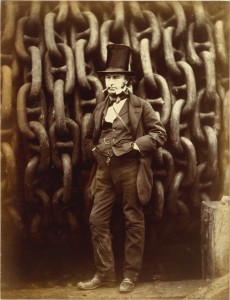


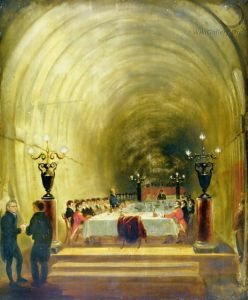




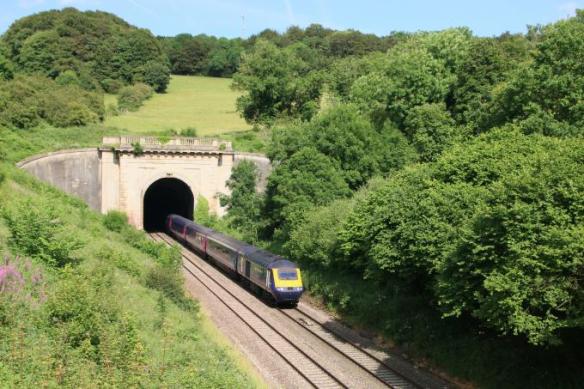
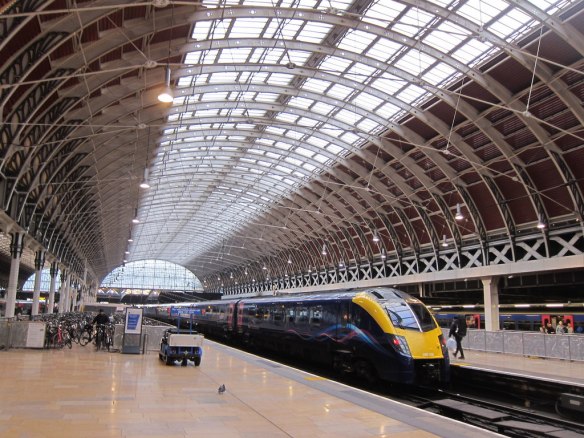


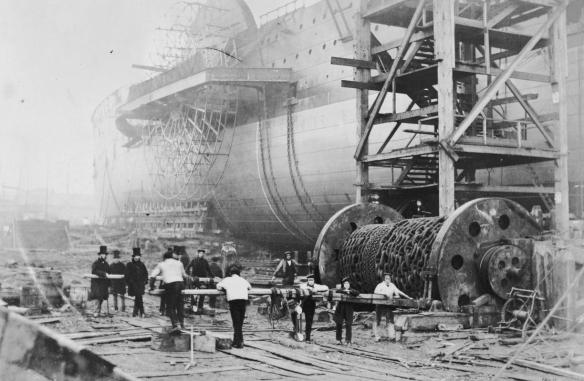

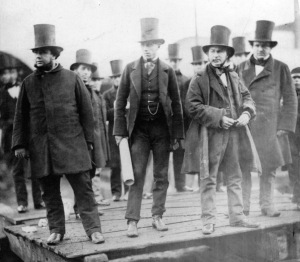
Fascinating episode! Never thought I would be that interested in an up to this point to me completely unknown engineer. Thank you for expanding my world! Just a quick note on Teredo navalis, though, to perhaps expand someone else’s world… This fascinating shipworm is in fact a highly adapted clam. All that remains of the clam shell is the two triangular shields on the anterior end of the mollusc, that it uses to burrow into wood. It may look rather similar to an earth worm eating it’s way into the ship (and hence it’s name) but it is more closely related to oysters and escargots…
Good clam facts! Thank you, and glad you enjoyed the episode.